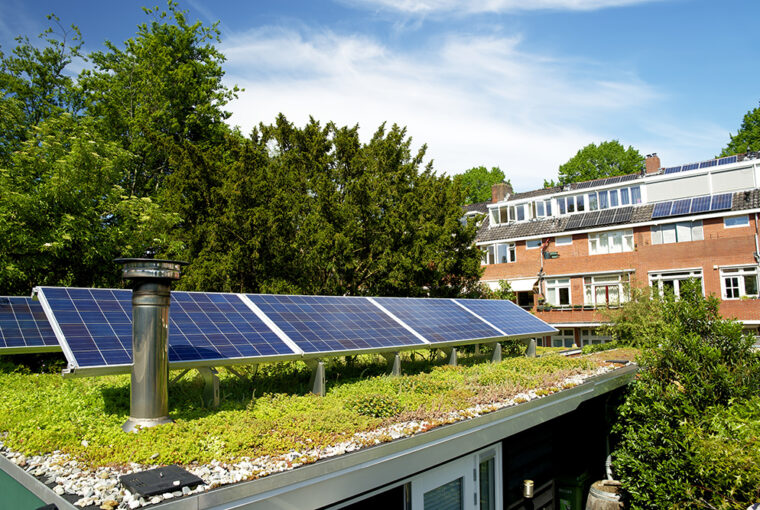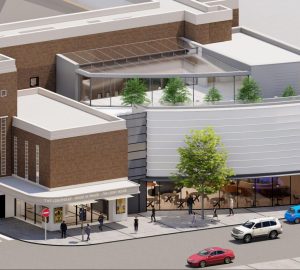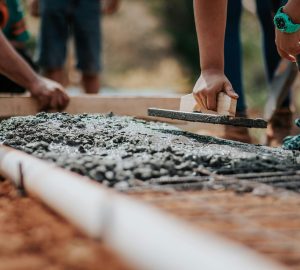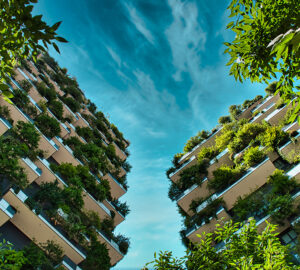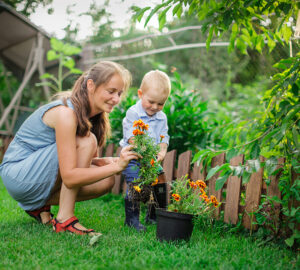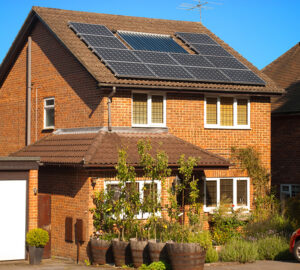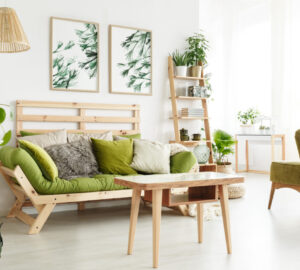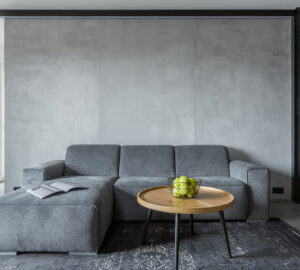You’ve done research on making your home green. You want to make sure that your home doesn’t wreak havoc on the environment (and vice versa). You’ve seen the beautiful photos of the homes with sloped roofs covered in vibrant green plants. Now you’re picturing a flourishing garden on the roof of your home.
You may feel ready to take the plunge and commit to a green roof and an eco-friendly home. But have you considered maintenance? How will you maintain your home? Don’t fret. There are low maintenance options available for this roofing trend that’s taken the eco-friendly world by storm.
What is Green Roofing?
Green roofing is the concept of using plants or vegetation as a protective layer on the roof of your home or dwelling.
Green roofs have been increasing in popularity in urban areas with heat islands and low plant life. Heat islands are areas with a concentration of large buildings and paved roads—there is more concrete and asphalt to absorb the sun’s rays and give off heat in these areas.
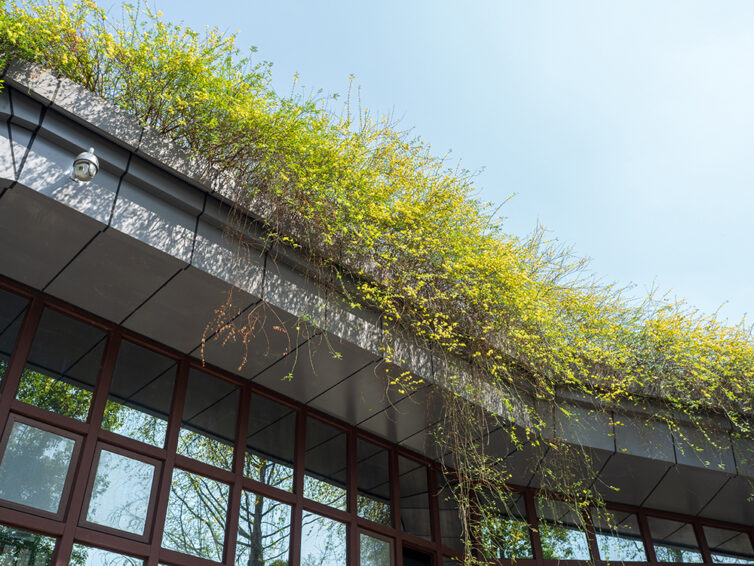
According to the United States Environmental Protection Agency (EPA), green roofs aid in reducing the negative effects of heat islands. Heat islands can create an 8 deg C increase in some cities, and 10 deg C in larger cities such as London.
Green roofs have immediate benefits for homeowners, such as:
- Providing insulation for heating, cooling, and noise reduction
- Acting as external protection for your roof from weather elements, such as UV rays and hail
- Stormwater management
- Improving air quality by removing dust
- Plants releasing oxygen as a byproduct of photosynthesis
Green roofs are naturally beautiful, help cut costs on electric bills, and they have a positive impact on the environment. There’s many reasons to adopt one for your home. No matter the reason you decide to try a green roof, you must take time to choose which type of green roof works best for you and your home.
Pros and Cons of Green Roofing
Options, options, options…we all like options. A green roof is an added layer of protection to a home’s existing roof. When weighing your options of a green roof, it is good to weigh out the pros and cons before fully committing.
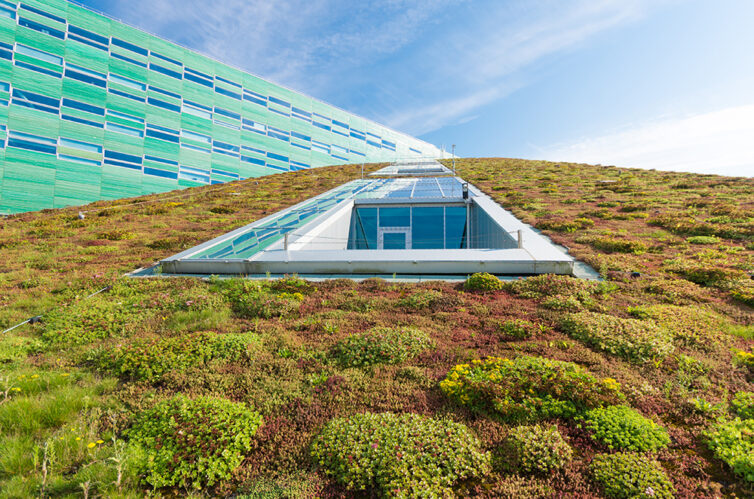
Pros
- Positive environmental impact
- Opportunities to grow herbs and vegetables locally in urban areas
- Additional beauty to a building or home
- Roof protection from weather
- Protects roofing from elements so it lasts up to three times longer
Cons
- Various amounts of maintenance is required, depending on the type
- Materials, labour, and maintenance can add up
- Designs are limited by building structures, climate, and plant type
- Researching the plant formation and planning the structure requires time
Types of Green Roofs
When making your choice of preferred green roof, you must consider the shape and support structure of your roof. Do you have a square roof? Is your roof flat or sloped? Is it a steep slope?
There are different types of green roofs: intensive, semi-intensive, and extensive. Each green roof is constructed with multiple layers—thermal insulation, waterproof membrane, drainage layer, filtration layer, substrate layer, and vegetation or green space. Depending on the type of green roof, there may be more layers. Is your roof sturdy enough to support additional weight from the different layers, plants, and water from rain or snow?
Intensive Green Roofs
Intensive green roofs usually involve larger plants and complex layering. The additional layers are needed to protect your home and the roots of the plant life. A rooftop park-like garden you can stroll in is one way to describe an intensive green roof. These green roofs require a large amount of maintenance, such as weeding, mowing, and watering. It all depends on the amount of usage by people and the type of plants and vegetation.
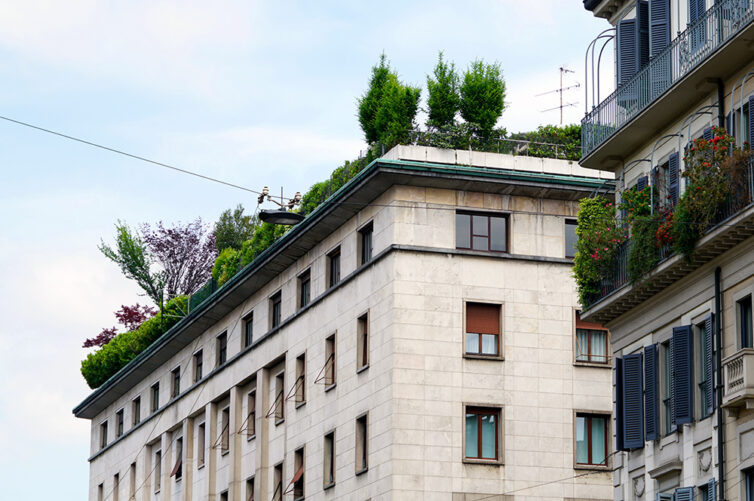
Set apart by the soil or substrate layer thickness, intensive green roofs can be quite a load to carry for any building structure. Your choice of vegetation is limited by the climate of your area. But you can opt in to change the “landscaping” as you see fit. Plants that work on intensive green roofs include:
- Trees
- Shrubs
- Full lawns
- Vegetables and herbs
- Any plants with deep roots
Semi-Intensive Green Roofs
Your roof may not be fully accessible. But if you can access your rooftop, a semi-intensive green roof can work for you. Similar to the intensive green roof, there are additional layers of substrate (growing medium or soil) to ensure that your budding plants will grow uninhibited. With a thinner substrate layer, smaller trees, shrubs, small lawns, and other plants with medium length roots can work on a semi-intensive green roof. A moderate amount of maintenance is required.
Extensive Green Roofs
Extensive green roofs are less complex and usually consist of low maintenance plants. With less layering, extensive green roofs are considered lightweight compared to other type. The thin or shallow layer of substrate works best with moss, low growth grasses, sedums, or succulents. Little maintenance is required with extensive green roofs; this roof type would be ideal if your roof is not accessible.
Best Low Maintenance Option
The top low maintenance green roofing solution is an extensive green roof. Because extensive green roofs often use a shallow growing medium perfect for Sedum (a low maintenance vegetation) they don’t require frequent maintenance to keep up a healthy green appearance.
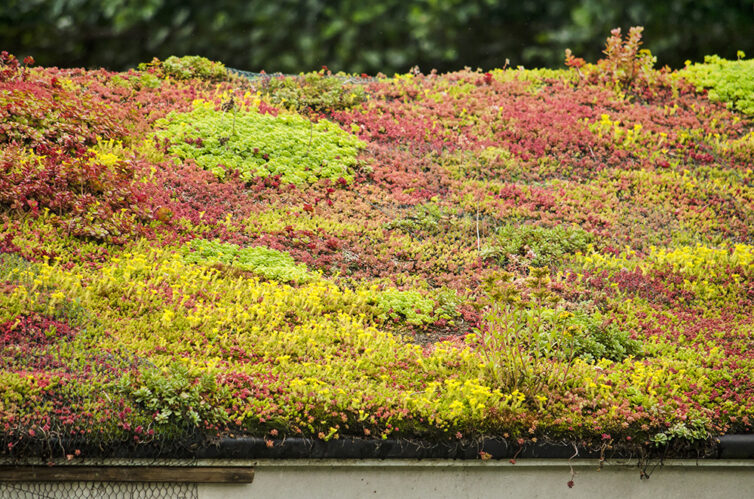
Sedums aren’t your only low maintenance vegetation choice, but depending on the climate and location of your home, your choices of vegetation may be limited. If you live in a colder climate, you can choose a low growing field grass or moss. With this option, you would have to “customise” your soil mixture for depth and growth capabilities. But don’t be discouraged. There are so many varieties of mosses, succulents, and sedums. Chances are high that you will find a few that fit your needs.
Performing the least amount of maintenance on your green roof requires having a low-growth plant that requires minimal watering and trimming. Ideally, a succulent is a good choice as vegetation. There are a variety of species of succulents that thrive in milder and drier climates. Some are even able to tolerate extreme drought conditions. The main problem in the UK would actually be too much rain and the frost in winter.
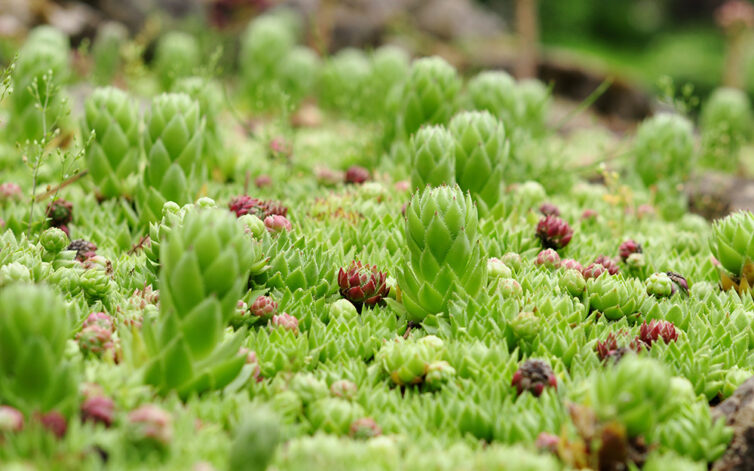
Concerning green roof solutions, the most environmentally friendly option is the option that’s green all the way around— the option with low maintenance and low cost but also provides a high positive impact on the environment. In an ideal scenario, that would be an extensive green roof with an evergreen perennial (meaning a long-lasting plant) that does not require frequent watering or trimming.
Conclusion
Green roofs are a sustainable roofing option that include layers of plants, growing medium (soil), filter and drainage layers, waterproof membrane, and thermal insulation on top of a structural support layer. The different types of green roofs vary in the amount of layers, thickness of soil, the amount of maintenance required, and the accessibility of the roof. Each type of green roof (intensive, semi-intensive, and extensive) caters well to different vegetation. Overall, the extensive green roof requires the least amount of maintenance.
The different layers of green roofs provide depth for the plants’ roots, as well as protection for the roof of your home. The order of the layering is important, and it explains why green roofs sometimes offer advantages that other roofing types do not. Conventional roofing— insulation applied under the roof membrane— is found in low slope roofs.The order of layers has disadvantages for roof protection. It is also often susceptible to leaks. With green roofs, the waterproof membrane helps keep the roof of your home free of leaks while still retaining moisture for plant life to flourish in the growth medium.
If your heart is set on a green roof but you aren’t a DIY champion, don’t be discouraged. Yes, some green roofs can be complex and challenging. But it’s not as difficult as it may appear.
The first step would be to consult a professional. Before you begin your project, you must remember that the base for your green roof is your home’s current roof—in its current condition. You want to be sure that your base is sound, sturdy, and leak-free.
Remember to consider these things while choosing your green roof:
- Why do you want a green roof? Your reasoning will affect some of the choices you make.
- What is the shape of your roof?
- Is your roof leak-free and sturdy? If you’re unsure, you should call a professional.
- What is your budget?
- What plants grow well in your climate?
- How much maintenance are you willing to do to maintain a healthy green roof?
In a perfect world, nothing would require maintenance. Things happen. Storms come. Repairs are needed. Whether you are a homeowner or a renter, keeping a leak-free and well-insulated home and roof requires upkeep.
